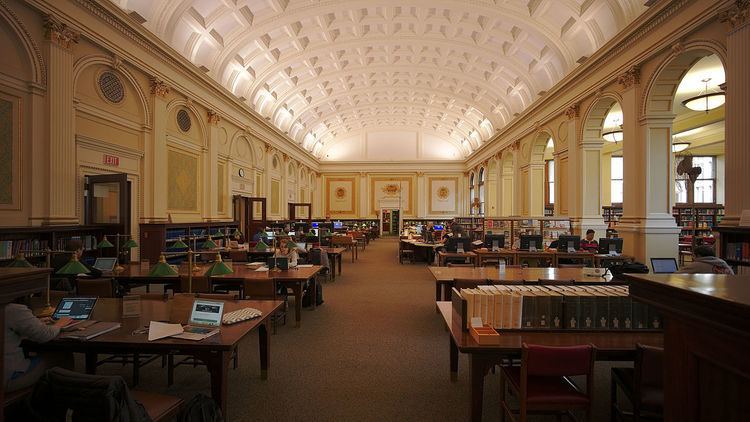Established February 6, 1890 Population served 2,600,000 Budget $26,879,454 Phone +1 412-622-3114 | Size 5,230,200 Members 294,733 Area 4 ha Circulation 3,529,379 | |
 | ||
Address 4400 Forbes Ave, Pittsburgh, PA 15213, USA Hours Open today · 10AM–5:30PMSaturday10AM–5:30PMSunday12–5PMMonday10AM–8PMTuesday10AM–8PMWednesday10AM–8PMThursday10AM–8PMFriday10AM–5:30PM Profiles | ||
The Carnegie Library of Pittsburgh is the public library system in Pittsburgh, Pennsylvania. Its main branch is located in the Oakland neighborhood of Pittsburgh, and it has 19 branch locations throughout the city. Like hundreds of other Carnegie libraries, the construction of the main library, which opened in 1895, and several neighborhood branches, was funded by industrialist Andrew Carnegie.
Contents
The Pittsburgh Photographic Library is a photography repository held by the Carnegie Library of Pittsburgh of over 50,000 prints and negatives relating to history of Pittsburgh.
History
The City of Pittsburgh was originally home to eight Carnegie libraries constructed at the turn of the 20th century. In 1881, Andrew Carnegie offered a US$250,000 grant to the city for the construction of a public library on the condition that the city provided the land and annual funding for the maintenance of the property. The city declined Carnegie’s initial offer out of concern that a publicly funded library was not a state-sanctioned use of public tax funds. With the passing of several years and the state legislature’s endorsement of the project, however, the city reconsidered the offer and reached out to Carnegie in the interest of accepting his grant.
In 1890, the City of Pittsburgh accepted an expanded grant of $1 million for the building of the main library in Oakland and five branches in the neighborhoods of Lawrenceville, West End, Wylie Avenue (Hill District), Mount Washington, and Hazelwood. While the initial plan only called for those five branches, the Pittsburgh would go on to receive another three Carnegie libraries in the East Liberty, South Side, and Homewood neighborhoods. Construction on the main library was finished in 1895 while the branch libraries were constructed over the following fifteen years, ending with the completion of the Homewood branch in 1910.
Six of the original Carnegie library branch locations continue to serve as public libraries in their respective neighborhoods: Lawrenceville, West End, Mount Washington, Hazelwood, South Side, and Homewood. The East Liberty branch was demolished in the 1960s as part of a redevelopment plan, and the Wylie Avenue branch was moved to a new location in 1982.
Branches
Partnership with suburban branches
For decades the CLPgh has partnered with suburban area branches, in 2014 talks were started seeking innovative ways to combine some services.
Our Library, Our Future
The Our Library, Our Future voter initiative was a campaign spearheaded by the library & community supporters to increase funding for the library by raising local property taxes. The voter initiative would raise the millage rate in the city of Pittsburgh by a quarter of a mill. On November 4, 2011, city voters voted in favor of the referendum by a 72% majority. The increase in taxes gives the Carnegie Library of Pittsburgh approximately an additional three million dollars a year.
